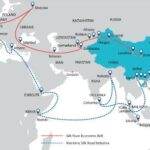Waterways transport on the Danube needs modern infrastructure leading to a more competitive low-carbon economy in the Danube region.
Despite the 70 ports functioning along the Danube, only those in Germany and Austria display a level of infrastructure, facilities and technologies that provide high-quality transport & logistics services with reduced negative effect on the environment.
Poor access infrastructure linking the ports to other major transport modes (roads and rail) and obsolete port infra- & super-structure, outdated equipment and insufficient waterway maintenance are key obstacles. All the structural and bureaucratic deficiencies result in little cargo volumes and reduced service quality. Diverse legislation applicable in the region lead to a high diversity of ownership and administrative models, which make private investments into the ports and the provision of high-quality services rare and difficult.
DAPhNE – Danube Ports Network is the first project to focus on improving the performance of Danube ports with the aim to turn them into buzzing economy centres, by analysing topics such as port legislation & funding, port administration & management, port development & port strategy & port network formation.
To eliminate the differences and to ensure full potential of the Danube ports as nodes for state-of-the-art, cost-effective logistics and centres for regional development, after investigating in detail all four topics, DAPhNE proposed an integrated approach and identified harmonized solutions.
The main focus was to establish legal provisions recommendations facilitating the implementation of port infra & superstructure and on helping ports tap their full potential as eco-friendly multi-modal hubs. One of the innovative features approached is linked to the eco-improvements available for the Danube ports, a green port policy being elaborated.
A pilot deployment for the port IT community system was developed and implemented in 3 Danube ports (Enns – Austria, Bratislava – Slovakia and Novi Sad & Smederevo – Serbia). This innovative system optimizes port and logistics processes through a single submission of data and connecting transport and logistics chains. It enables intelligent and secure exchange of information between port community members.
A transnational Danube Port Development Strategy was elaborated, supported by an Action Plan which shall facilitate the transition process in the entire region. As part of the project, the peer organisations created a “Danube Ports Network”, allowing all actors in the region to become members and to develop further projects to promote their interests and to provide tailored solutions.
DAPhNE’s activities are key steps in turning Danube ports into catalysts of sustainable economic growth in the Danube region and important elements of European transport and regional development policy.
Find more about waterways mobility in EUSDR here:https://navigation.danube-region.eu/
Photo: http://www.interreg-danube.eu/approved-projects/daphne




